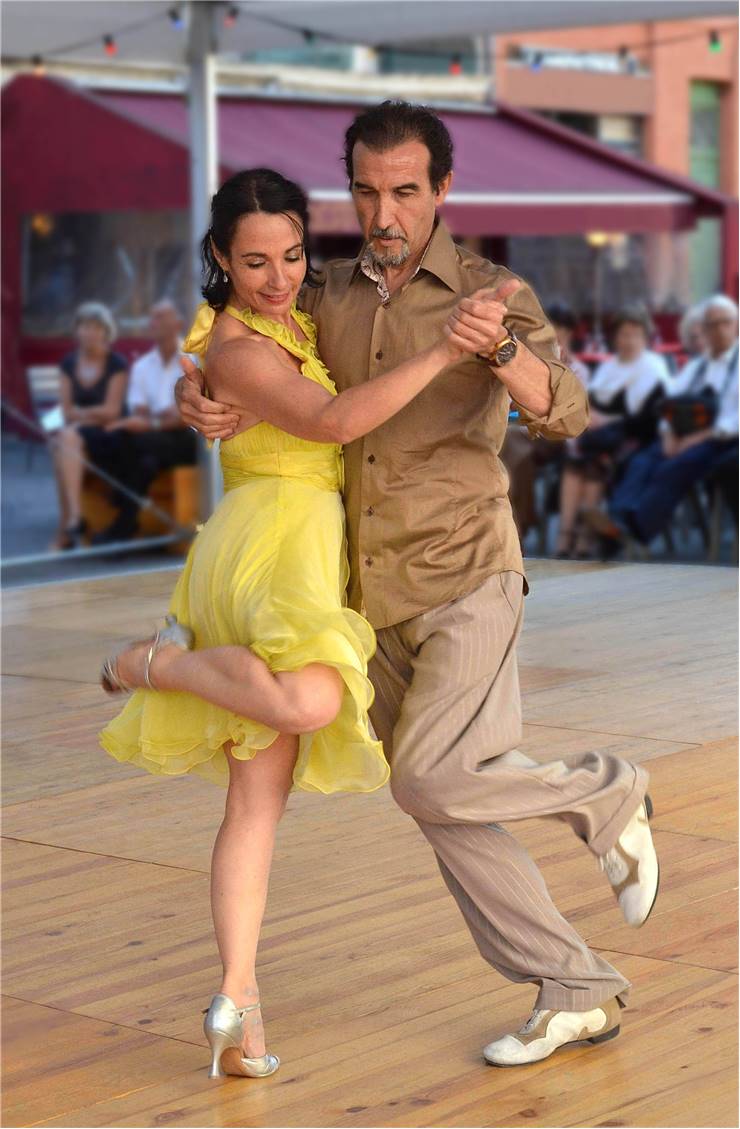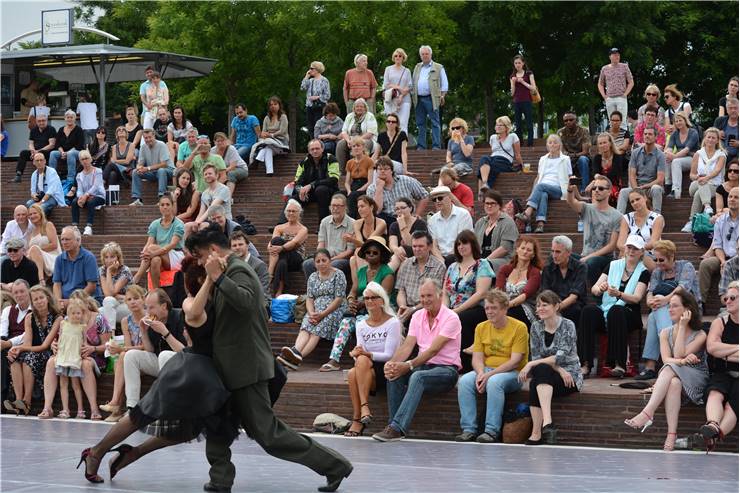Dances of Argentina - Traditional Argentinian Dances
Argentina is known all around the world for their innovative, impulsive, intimate and passionate tango dance, but this large and diverse country is also home of the incredible variety of other traditional dances that are fueled by the beats of several kinds of native Argentine music.
The best known of these dances are native (derived from the music, dances, ceremonies and celebration dances that were present in South America at the time of the arrival of European immigrants) and modern folk dances (which were developed over centuries of development of this large nation).

The development of Argentine music has played a large role in the formation of the modern folk dances that are today practiced in all regions of this country. Here are the most notable dances today practiced in Argentina:
Argentina is the country of dance
1. Carnavalito
The Argentine regions of Altiplano and Puna are known for the development of the traditional South American dance that is today practiced in numerous religious festivities. Since its early development, this dance went through changes that had made it into a mix of the Spanish colonial culture and the indigenous cultures of South America who had practiced this dance long before European settlers arrived at the shores of this country. Instruments that most commonly follow this dance are native instruments such as quena, siku, and the bombo. The music is very cheerful, quick, and multiple partners (arranged in groups or rows) follow the beat of the music with smiles. A leader of the row or a dance group (male or female) usually holds a handkerchief or ribbons in one of its hands.
Today, Carnavalito public dances are commonly practiced in the northern regions of Argentina, most notably in regions of Salta and Jujuy), as well as in some western parts of Bolivia.
2. Chacarera
Chacarera is a type of folk music dance that originated in the northern region of Argentina, more precisely from the province of Santiago del Estero. Since its origin, it was always closely connected with the popular tango and is viewed in Argentina as the rural and traditional counterpart to the cosmopolitan and internationally accepted version of the modern tango.
The core component of the Chacarera is the dance routine differences between male and female dance pairs. In this dance, females stay stationary for prolonged periods of time, while male performers circle around them. Music of Chacarera can be played by both traditional and contemporary bands or soloists, with the most common instruments being guitar, violin, bombo drum, and voice.
Chacarera is also famous for the flamboyant clothing style it requires - traditional Argentine flouncy dresses with wide skirts for women, and wide-legged pants, thick belts, and hats for men.
3. Chamamé
Chamamé is a traditional folk dance which originated from the northeast regions of Argentina and Southern parts of Brazil (such as regions of Santa Catarina, Paraná, Mato Grosso do Sul, and the Rio Grande do Sul). The birthplace of the dance can be traced to the Yapeyú Corrientes, which is regarded as one of the centers of the musical culture that birthed Chamamé under the encouragement of Jesuits who promoted cultural growth until the late 18th century. The modern version of this dance received influences from immigrants of several European countries, most notably Germany and Poland. Today’s Chamamé is a mix of native, Spanish, German and Polish influences.
The term Chamamé was first used in the early 1930s, and the earliest recordings of this dance can be traced to early years of 20th century. Chamamé is most commonly danced with music played by Spanish guitar, violin, and accordion.
4. Cuarteto
Cuarteto is a famous folk dance and a musical genre which originated from the Cordoba region in Argentina. The dance was originally created in the 1940s under influences of Spanish and Italian immigrants who brought with themselves various European musical styles that they mixed with the native music of Argentina. The result of this mix is an upbeat and cheerful music that is similar in rhythm to the modern Dominican merengue. The peak of its popularity was in the 1970s and 80s when this musical style was viewed as the Cordoban local alternative to the musical culture of Buenos Aires.
Its name comes from the tendency of this music to be played by quartets - four-piece bands that were most commonly made out of the piano, violin, accordion, and bass.
The most famous Cuarteto artists are Cuarteto Leo band, Carlos Mona Jiménez, Tru-la-lá band, Rodrigo and Walter Olmos.
5. Cueca
Cueca is a folk dance that is practiced in Argentina, but this dance is also famous in Bolivia and Chile (where this dance is also adopted as the country’s national dance). The origin of this dance is not precisely known, but it is presumed it came as the result of the mix of indigenous and European Spanish musical styles, with the largest contributors being the zamacueca dance of Peru and Spanish Fandango dancing. From Peru, this dance moved to Chile, Bolivia, and Argentina where it continued to evolve to its modern state.
Most commonly, Cueca is danced using white, red or black costumes and dresses fashioned in the style of Chilean national clothes. In Argentina, this dance is most commonly danced in the region of Cuyo, which is located near the border with Chile, but it is also practiced in provinces such as Mendoza, Jujuy, Chaco, Salta, La Rioja and Catamarca. However, in Argentine country cueca is danced in several variations, including changes in music style, clothing and the way of dancing.
6. Cumbia villera
Cumbia villera is the subgenre of cumbia music that is famous entire Latin America. It originated in the slums Argentina to be the voice of lower and marginal classes, often centering on the themes of life in rough environments. The music style of Cumbia villera mixes the influences of Colombian and Peruvian cumbia with many other musical genres, such as the gangsta rap, punk rock, tango, reggaeton, Argentine folklore, protest song, narcocorrido and others.

The lyrical themes of cumbia villera are often centered on everyday life in rough environments, slums, poverty, misery, use of drugs, violent clashes, anti-police themes, night lifestyle, football culture , the authenticity of being a lifelong member of the marginalized social class, antipathy toward politicians and more.
7. Gato
Gato is a very interesting variation of the musical style of chacarera, but with the notable different interpretation of its rhythm and dancing routines. This popular folk dance incorporates structure in which lyrics are often very humorous, and the performers have the freedom too often pause the music and dance routine toimprovise some scene, often to create a heightened sense of comedy.
The name of this dance is taken from the Spanish word of “gato” which means “cat”.
8. Murga
Murga is a popular carnival and musical theatre dancing style that is popular in countries such as Argentina, Uruguay, and Spain. The core requirement of this dance is a group that consists of usual up to 17 performers, which are usually men. The dancing and singing routines that dancer group prepare for carnival performance can last up to 45 minutes , and they consist of unique dancing moves, suite of songs (with opening and closing songs being the most important), and prepared recitative speech lyrics. Performances of Murga are usually done on carnival grounds or community stages (also known as tablados in Montevideo in Uruguay).
The Murga group of performers usually consists of chorus members, three percussionists and the performance can have up to five vocal parts. Percussion instruments are usually drums of the bombo, redoblante and platillos varieties. Clothing of Murga dancers is highly elaborate and jester-like.
9. Pukllay
Pukllay (also known as phukllay, pucllay, pugllay, phujllay, pujhllay, pujllay and puqhllay) is traditional folk dance and festival held in the region of central Andes. The name of this dance is derived from the Quechua word that signifies “play", "to play" or "carnival". In traditional times, this dance and celebration festival was organized to signify the end of the raining season and the beginning of the harvesting season , but in the modern times it has become connected to the celebration of the arrival of Christianity, and the celebration of the battle won over Spaniards. One of the centralclothing motives of this folk dance is the Spanish helmets and spurs.
Although this dance is popular in some parts of Argentina, it is practiced much more in Bolivia where its Pukllay festival in Tarabuco has been nominated by UNESCO for World Heritage cultural mark of this region of the world.
10. Zamba
Zamba is a national folk dance of Argentina, promotion core values of many Argentine music and folk dance traditions. Although it has some similarities to Samba, this dance differs from it in several musical, rhythmic and temperamental ways. Dancers of Zamba must master different kind of steps, dance routines and costume wearing, making it similar in some ways to cueca.
Men and female pairs who dance Zamba are required tocircle one around another while using elegant moves to wave white handkerchiefs. The music of Zamba can be of many genres, which is the reason why this dance has become so popular in all regions of the large Argentinian country. Many regional versions of Zamba are promoting the local musical and fashion styles, often promoting the beauty of both the region and the women in it. There is even variation of Zambas that are intended to be danced to provide the statement of a political protest.
Zamba is today dancers regularly across Argentina at social gatherings, folklore parties, festivals and national holidays.

